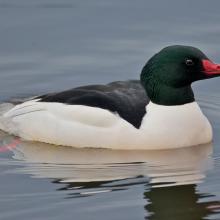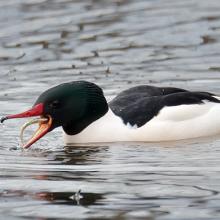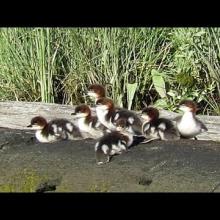

Join BirdNote tomorrow, November 30th!
Illustrator David Sibley and actor H. Jon Benjamin will face off in the bird illustration battle of the century during BirdNote's Year-end Celebration and Auction!
Even on a frigid winter day, a wander along the Potomac brings unexpected rewards. January can offer one of the more exceptional sightings: Hooded Mergansers. I watched a pair working the slower channels of the river and marveled at not only their appearance, but their toughness in fishing hour after hour in the ice-cold water. It’s one thing for human observers to be out for a short stroll; quite another to spend much of the day diving into the riffles for a living.
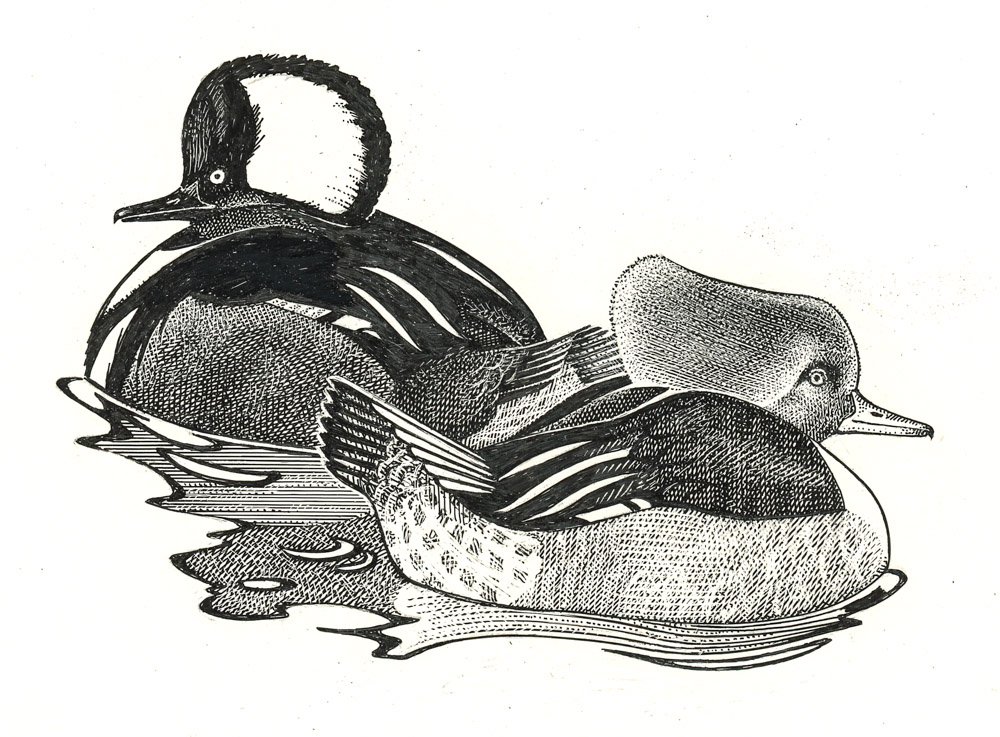
Few birds are as flashy as this fish-eating duck. Hooded Merganser males do more with black and white plumage (and a panel of chestnut along their sides) than virtually any other bird. And to wow a female or competing male, the drake can pull up its “hoodie," erecting a crest with a large white patch trimmed in black that explores the aesthetic territory between punk and elegance.
Aside from the fashionable headgear, the Hooded Merganser shares a practice with another elegant local—the Wood Duck—nesting in abandoned woodpecker holes or other tree cavities in forests bordering the river. Merganser chicks born there waste no time in early development: a day after hatching, they walk to the edge of their hole nest and leap into the world. They can drop from great heights and land on the ground or in the water—and swim away—unharmed.
Like the other six species of the merganser subfamily of ducks, Hooded Mergansers are strictly aquatic feeders. Their saw-like bills help them hold tight to a catch of slippery fish. Most merganser species also have a preference for fast-moving clear water as a hunting ground. So, in one way, the continued presence of both Common and Hooded Mergansers in our river indicate its recovering health.
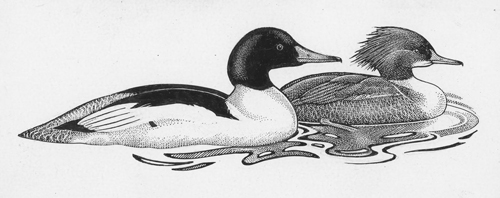
Hooded and Common Mergansers have wide ranges and are relatively abundant, but two other Merganser species are not as fortunate. The endangered Scaly-sided Merganser in the Russian Far East breeds along wild rivers in the same locales where Amur tigers hunt red deer and occasionally fight with brown bears. I spotted neither tigers, bears, nor mergansers on my trips there, but I did see how the free-flowing rivers of the region are threatened by logging and development.
I’ve had much better success, ironically, with an even more rare species, the critically endangered Brazilian Merganser. Fewer than 250 are left in the world, giving them dubious status as one of the most threatened of all birds. Their preferred habitat is a clear, fast-running river system that flows out of the Cerrado, a high plateau wedged between the eastern Amazon and coastal Brazil and whose waters are polluted by gold mining activities and development.
Meanwhile, the Hooded and Common Mergansers are secure in our national park along the wild Potomac. On this winter day, I find only joggers ahead of me, not a gold miner in sight.
###
Hardy Birds originally appeared in The Cabin John Village News of Cabin John, MD, in February 2014
Illustrations © Trudy Nicholson


